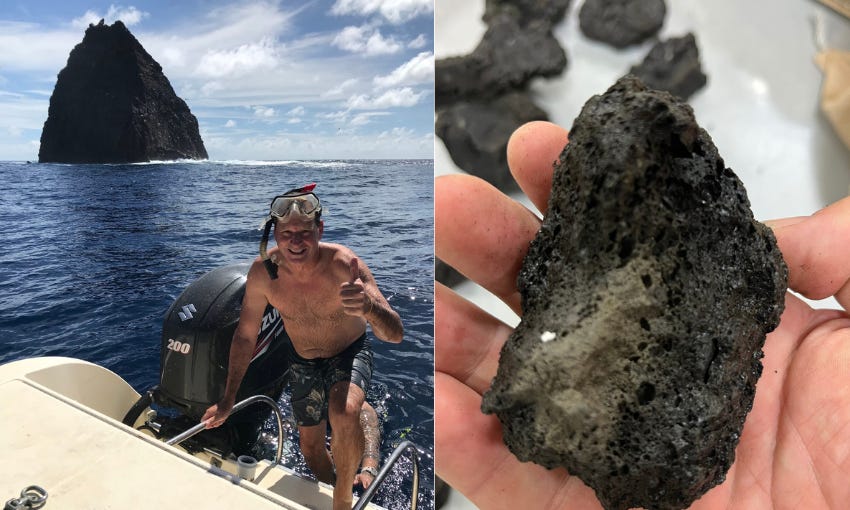Saving species one animal at a time with the Wildlife Hospital
Dunedin’s Wildlife Hospital has treated more than 2,000 native animals over the last four years – including one penguin with a penchant for shark encounters.
Kia ora! Welcome to Future Proof, brought to you by Electric Kiwi. It’s great to have you here.
It was the summer of 2017 when Chrystall the yellow-eyed penguin first waddled through the doors of the Dunedin Wildlife Hospital – just a pop-up facility at the time. The one-year-old hoiho had been “absolutely shredded” by a shark, according to hospital manager Jordana Whyte. But wildlife vet Dr Lisa Argilla managed to save the feisty wee penguin, and she was returned to her home on the wild coastlines of Ōtepoti.
Fast forward to 2018, by which time the Dunedin Wildlife Hospital had opened as a year-round facility dedicated to caring for native species. Once again, Chrystall the hoiho showed up with a shark bite – “not as bad this time,” says Whyte. And again, Chrystall was patched up and sent on her way, with strict instructions to stay away from sharks.
But Chrystall didn’t listen, and in 2019 she arrived for a third year in a row with yet another shark bite. When 2020 rolled around, the wildlife hospital staff awaited her inevitable return – but she didn't show. “We were actually quite worried when we didn’t see her, because we thought ‘oh maybe the shark’s finally got her’,” says Whyte.
Chrystall the hoiho in 2018 and 2019. Credit: The Wildlife Hospital.
But in the 2021 hoiho breeding season, the hospital received some fantastic news. Chrystall had been spotted down in Southland, raising her first pair of chicks. “We were really, really chuffed,” says Whyte.
Chrystall is just one of more than 2,000 native animals treated at the Dunedin Wildlife Hospital over the last four years. More than 60% of the patients are classified as threatened or at risk of extinction – for many of these species, the survival of every individual counts.
I listened to Whyte give a talk last week, regaling the online audience with tales about animals like Horace the northern giant petrel, Brutus the tuatara and Bloomfield the kea (yes, named after the former director general of health).
The hospital has “most of the things you’d expect to see in a people hospital, but smaller”. That means there’s a surgical theatre, IV lines for penguin flippers, a hand-me-down anaesthetic machine from Dunedin (People) Hospital, equipped with a range of mask sizes to fit the teeniest riroriro fledgling or the chonkiest sea lion.
The work at the Dunedin Wildlife Hospital can be smelly – getting elbow deep in penguin poo, or preparing 100 litres of fish slurry to feed hungry hoiho chicks. But it’s worthwhile work, with an 80% success rate.
Whyte’s anecdotes of jandal-wearing tūī and kākāpō chick antics are the kind of heartwarming stories that bring us closer to our non-human neighbours. They’re the kind of warm-fuzzies that make you feel hopeful about the future of our native wildlife.
But I couldn’t help thinking of what happens at sea to many of the hospital’s patients – and I’m not talking about run-ins with hungry sharks. While Dr Argilla, Whyte and the Wildlife Hospital team are working hard to save hundreds of hoiho from barracuda bites and avian malaria, we’re not extending that same level of care to our spectacular seabirds when they’re out of sight, at sea.
Last week, the annual report for seabirds was released by MPI. It showed that some commercial fishers aren’t implementing best practice when it comes to reducing the risk of accidentally catching seabirds (aka, bycatch). For example, just 29% of surface longline vessels audited during 2020/21 adhered to bycatch mitigation measures. And even in those fisheries that are reportedly sticking to standards, hundreds of seabirds are still being inadvertently caught every year.
Seabird bycatch is not trending down. And it’s not looking likely that we will achieve the objective of “bycatch approaching zero” outlined in the National Plan of Action for seabirds, released back in 2020.
I’m sorry it’s not good news – but I promised I’d be honest as well as hopeful in writing this newsletter. Plus, it’s useful that we’re collecting this data, so we know there’s a problem and we can find solutions to fix it. We’ve made progress on protecting our seabirds before. In the early-mid 2000s, seabird bycatch decreased substantially. Now, we just have to make those leaps again – with technology, with regulations, with changing social norms in the fishing industry. However we do it, it will be worth it.
Let’s do it for shark attack survivor Chrystall and her hoiho chicks, Ruby and Sapphire.
Chrystall’s chicks, Ruby and Sapphire in 2021. Credit: The Wildlife Hospital.
Helping the planet with off-peak power
By moving your energy usage off-peak on Electric Kiwi’s MoveMaster plan, you can reduce your environmental impact and save money on bills. With different tariffs at different times, cheaper off-peak rates and half price power overnight, MoveMaster is perfect for EV owners and those with solar – offering a highly competitive solar buyback rate.
Peak electricity demand means more dirty generation is required, so moving some power usage to cheaper, off-peak periods is win-win for you and the planet!
Visit the Electric Kiwi website here to learn more.
Rising waters – and our plan to adapt
Water, water everywhere – and it’s getting in places we don’t want it. Thank you, climate change. With wild wet weather, flooding is front-of-mind, and today, the government released its National Adaptation Plan, outlining how we will respond to rising sea levels. Stuff’s climate editor Eloise Gibson has a rundown on what the plan covers (and doesn’t), while today’s Bulletin also has a quick look at the important deets.
Ahead of the release, RNZ’s climate reporter Hamish Cardwell took a look at our options, including sea walls, houses on stilts, and managed retreat. Whatever we choose, we need to “get cracking”.
When I spoke to Professor Niki Harré last week, she mentioned that we don’t communicate with care when it comes to sea level rise in Aotearoa, meaning people are left feeling scared that they won’t be looked after. Let’s hope the National Adaptation Plan kicks off a convo that leaves us feeling like we do have a plan.
Perhaps part of that plan could be working with nature, like making “room for rivers” to flow and flood as rivers are wont to do, instead of constraining them behind stopbanks. Newsroom’s David Williams takes a deep dive into the “rivers revolution” – a simple, nature-based solution to increasing flood risks.
And finally, if you’ve got any smartphone snaps of the recent flooding, upload them to the NIWA citizen science app as part of the NZ Flood Pics project and you’ll be contributing to our understanding of flood hazards and risks.
The midge that eats myrtle rust
Scientists have discovered a new species of midge (a type of tiny fly) whose larvae feast on myrtle rust – a nasty invasive fungus that infects native plants like ramarama and manuka. “The larvae turn this bright orange colour because they are packed full of these [myrtle rust] spores,” says Roanne Sutherland, the scientist who first observed the rust-munching bugs. We don’t know whether the midge is native or introduced from elsewhere, but scientists are excited about the possibility of midge-driven suppression of myrtle rust.
Native birds bounce back on Miramar Peninsula
Investment in predator control on Wellington’s Miramar Peninsula is raking in record dividends for native bird populations, with pīwakawaka numbers soaring 550% since the last count. "We used to have thousands of rat photographs to scan through weekly, now instead of rats we are picking up kākāriki on our cameras, and we are seeing more images of kororā than rats on the peninsula, which is epic," Predator Free Wellington project director James Willcocks told RNZ. What awesome inspiration to set up your own backyard trap, hey.
Like what you’ve read today? Share Future Proof with friends, family and colleagues.
Updates from the upside down – the geology under our feet
I find living in our geologically active corner of the world super cool (and occasionally disconcerting), so I hope you’ll indulge me in some news from below ground. Since May this year, a swarm of small earthquakes has simmered under Lake Taupō, but scientists say the quakes aren’t signs of unrest, and the Taupō volcano remains at Volcanic Alert Level 0 (thank goodness).
Meanwhile, a “slow motion earthquake”, unfolding over weeks to months, is currently ongoing under the central North Island. Between 30 and 50 kilometres beneath the Manawatū, the Australian tectonic plate is slowly slipping against the Pacific Plate. This earthquake is so slow-moving we can’t feel it, but Geonet has a fascinating explainer on these events that occur every few years.
Further afield, investigations are ongoing into why the January eruption of Hunga Tonga-Hunga Ha’apai was so explosive (which I covered for New Zealand Geographic earlier this year). Kiwi volcanologist Professor Shane Cronin visited the volcano – or what’s left of it – in April, and collected rock samples from the seafloor. But Cronin didn’t have the luxury of fancy sampling equipment and a huge research vessel. Instead, he simply jumped into the ocean and snorkelled over the volcano, diving down to grab a few rocks from its edge. “The main thing I was worried about was sharks,” says Cronin, “but I hoped the eruption had scared them all away.” (For the record, Cronin didn’t see any sharks. Just a few small fish and barnacles beginning to colonise the fresh volcanic rocks.)
Shane Cronin in front of what’s left of Hunga Tonga-Hunga Ha’apai, and rocks from the volcano collected by KOPRI. Credit: Shane Cronin.
Cronin recently visited the Korea Polar Research Institute (KOPRI), who did have the benefit of a high-tech research vessel to scoop rocks off the seafloor when they visited Hunga Tonga-Hunga Ha’apai. They dragged up rocks from the edge of the volcano’s caldera (crater), and even its centre. Cronin explains that the chemistry of these samples are painting a fuller picture of what triggered the huge eruption: “fingerprints” present in the rocks indicate that a magma cocktail mixed deep beneath the seafloor, reacting, releasing heat and increasing pressure. This was the initial trigger for the eruption. Cronin will be heading back to the submarine volcano next year, seeking to answer the question: Will it erupt again?
I, for one, am thankful we have such smart (and maybe a bit crazy) people investigating the unpredictable rumblings beneath our feet.
Until next week,
Ellen
Got some feedback about Future Proof or topics you’d like covered? Get in touch with me at futureproof@thespinoff.co.nz














